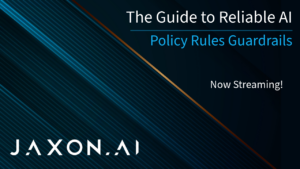Jaxon’s been building our own Domain-Specific Language (DSL) to design/build AI applications.
I’ve been trying to think of a way to explain it to the masses and this analogy is perfect… Imagine you’re a chef, and you have a special set of instructions and terms that you use in the kitchen. For example, you might say “sauté the onions” instead of “cook the onions in a pan with some oil until they’re soft but not burnt”. It’s a quicker, more efficient way of communicating that everyone in the kitchen understands. 
Cause analogies help… here’s another: Imagine you’re in a foreign country, trying to order a coffee. You don’t speak the local language fluently, but you know just enough to communicate your order effectively. In this scenario, the few phrases you know form a ‘specific language’ tailored for the ‘domain’ of ordering coffee.
This is the essence of a DSL in computing. It’s a type of computer language specialized to a particular application domain. Instead of having a language that can do a million different things, like general-purpose programming languages such as Python or Java, a DSL is designed to do one specific thing really well. It’s like the special lingo you’d use in the kitchen, but for coding.
DSLs are more a part of our daily digital lives than we might realize.
SQL: The Go-to DSL for Databases
One of the most prominent examples of a DSL is SQL (Structured Query Language), used for managing and manipulating databases. Think of SQL as a librarian who knows exactly how to find any book in a library – the library is your database, and the books are pieces of data. SQL lets you ask complex questions like, “Find all books by a certain author published after 1990” or simple ones like, “Find the book titled ‘The Great Gatsby’.”
Other Examples of DSLs
- Regular Expressions: Used for searching and manipulating texts. It’s like having a specialized magnifying glass to spot specific patterns of text in a large document.
- HTML (Hypertext Markup Language): The language for creating web pages. Think of it as the architect’s blueprint for a website, detailing where each element like text, images, and links should go.
- CSS (Cascading Style Sheets): While HTML sets up the structure, CSS is like the interior designer who decides how the website should look – its colors, fonts, and layout.
Why Are DSLs Important?
- Efficiency and Simplicity: Just as it’s easier to learn just enough of a language to order food or ask for directions, DSLs are simpler to learn for specific tasks than full-fledged programming languages.
- Precision: They allow more direct and precise instructions within their specific domain. Like a medical prescription tailored for a specific ailment, DSLs are crafted to address particular needs or problems.
- Accessibility: They often make technology more accessible to non-programmers. For instance, SQL can be learned by people who are not professional programmers but need to interact with databases.
We first got into DSLs for the U.S. Department of Defense where trust in the model’s output is critical. We’re marrying DSLs to LLMs; getting the creative power of LLMs balanced with the trust and confidence DSLs bring. It’s symbolic reasoning of yore meets modern age. We use LLMs to first help create the DSL based on organization-specific data and known vernacular. We then use the DSL to keep the LLMs honest.
Just like in our daily lives, where specialized skills can often be more practical than a jack-of-all-trades approach, in computing, the use of DSLs often leads to greater efficiency and better results in their respective domains.
Understanding DSLs and their applications can demystify a part of the tech world and show how tailored solutions often drive digital innovation and practical problem-solving. So next time you come across a DSL, remember the coffee order in a foreign land – it’s a language crafted for specific needs and efficiency!
Learn more about our approach on our site on the DSAIL page. The winds of change are coming!
Want to learn more? Contact us!





